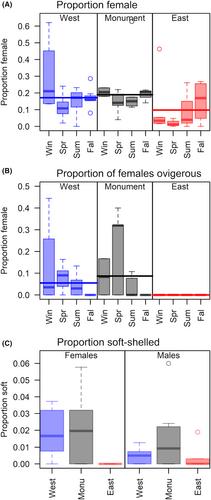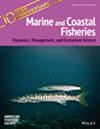There is international pressure to increase the worldwide expanse of marine protected areas (MPAs). However, MPAs often lack preexisting long-term biological baselines, which are essential for assessing MPA effects and for refining the conservation and socioeconomic benefits they confer to society. Our study addresses this issue by establishing demographic baselines for two commercially important species prior to a proposed fishing ban inside the Northeast Canyons and Seamounts Marine National Monument, a recently established MPA on the continental shelf break approximately 200 km southeast of Cape Cod, Massachusetts.
Samples were obtained by the Commercial Fisheries Research Foundation's American Lobster and Jonah Crab Research Fleet, which is an industry-based, fishery-dependent data collection program. Specially trained participants recorded year-round biological data from their 2013 to 2021 commercial catches of American lobster Homarus americanus and Jonah crab Cancer borealis. Samples were taken from an area inside the MPA and from two areas outside the MPA, spanning 130 km to the east and west.
American lobster sizes and sex ratios varied between areas, and their sizes, sex ratios, and proportion of ovigerous females differed between submarine canyons within areas. American lobster sizes, sex ratio, proportion of ovigerous females, and prevalence of shell disease were also affected by season and/or depth. Jonah crab parameters did not vary between areas, but sex ratio varied with season and depth, and the proportion of ovigerous females varied with depth.
These demographic baselines are the only data available, at a sufficient spatial and temporal resolution, for evaluating the effects of a proposed fishing ban in the MPA, and they fill important data gaps for stock assessments. To evaluate possible future population changes, it will be necessary to continue collecting data from inside and outside the MPA using comparable methods, and to account for the preexisting sources of variation that we have identified.



